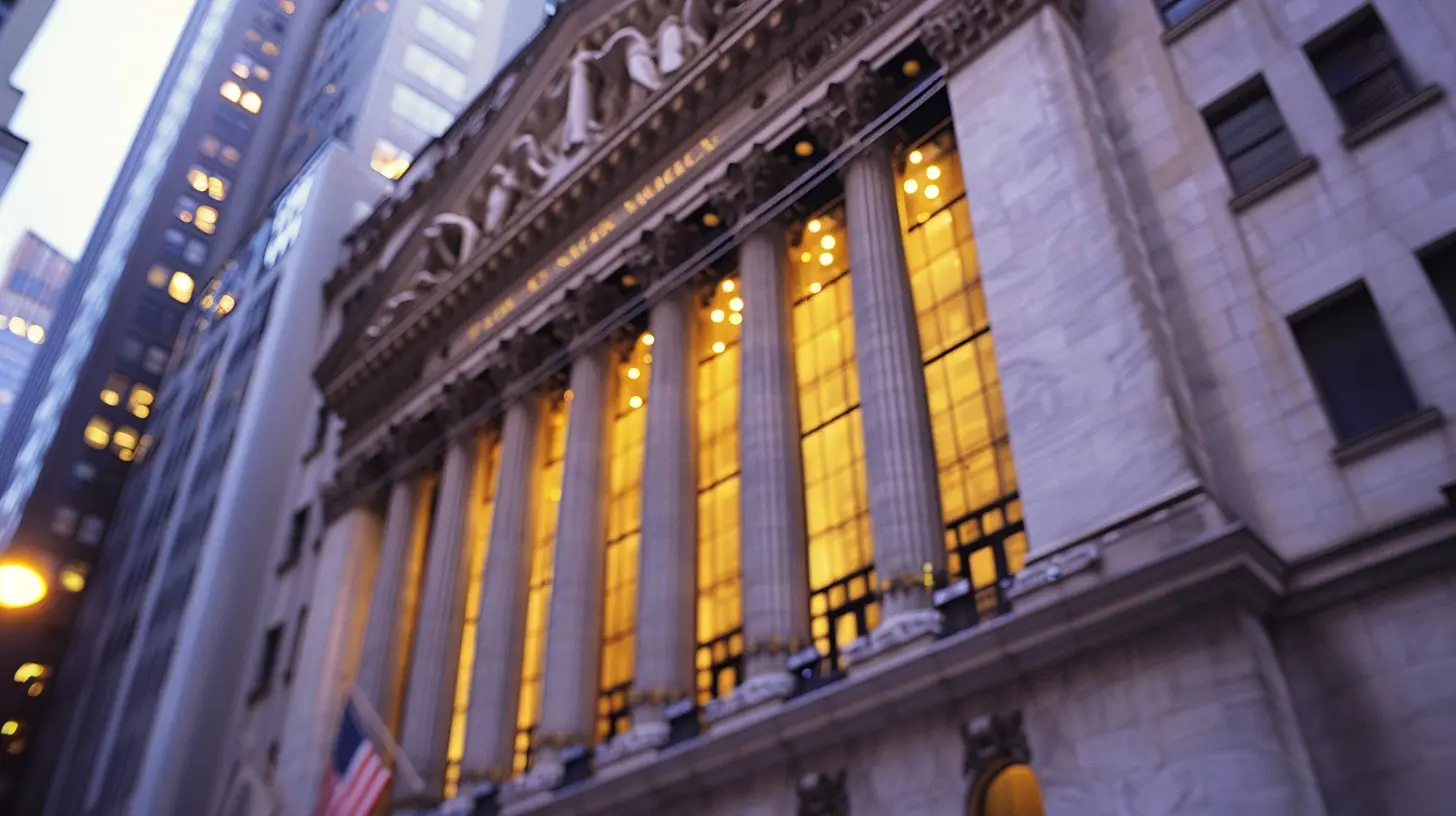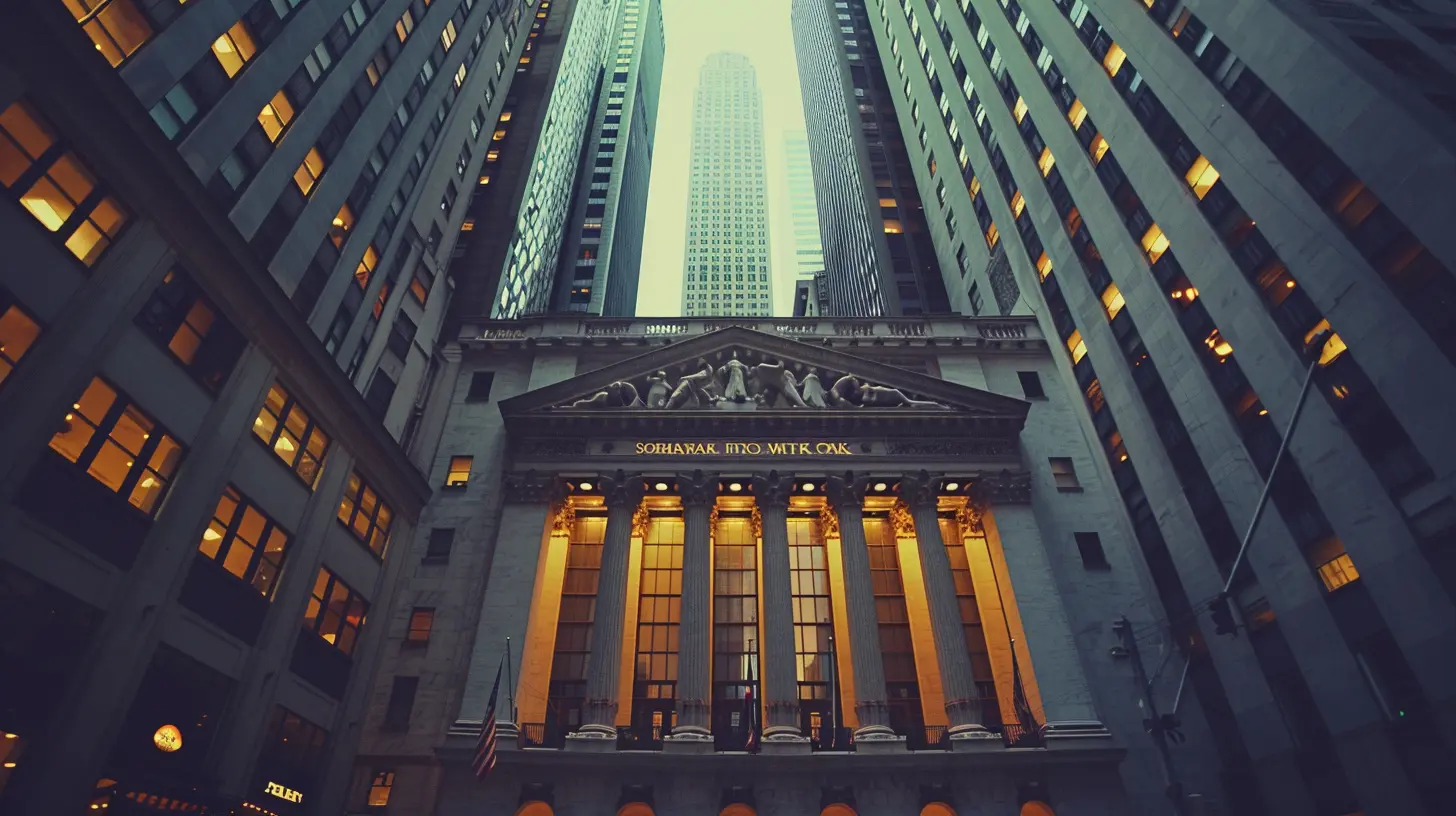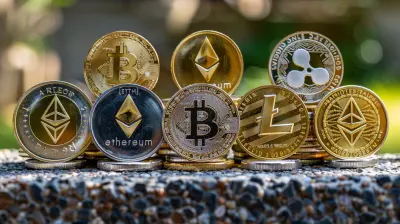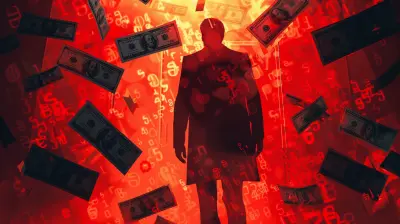Analyzing the Impact of Interest Rate Hikes on Financial Risk
6 September 2025
Interest rates might seem like just another number flashing across your financial news feed, but don’t be fooled—they’ve got the power to shake markets, impact investments, and even ripple through your personal finances. When central banks like the Federal Reserve raise interest rates, it’s not just a dry economic adjustment—it's a signal flare that can trigger a chain reaction of financial risk.
So, what exactly happens when interest rates go up? And why does it make investors, borrowers, and even governments get a little jittery? Let’s break it down together and understand the real impact of interest rate hikes on financial risk—without the jargon and snooze-worthy explanations.
🧠 First Off, What Are Interest Rates Anyway?
Before diving into the nitty-gritty, let's start with the basics. Interest rates are essentially the cost of borrowing money. If you take a loan, you pay interest. If you deposit money in a bank, you earn interest.Central banks, like the Federal Reserve in the U.S., set a benchmark interest rate that trickles down to everything—mortgage rates, credit cards, business loans, and much more. When they raise that rate, borrowing money gets more expensive. When they cut it? Borrowing becomes cheaper.
Simple enough, right? But the consequences? Well, they’re anything but simple.
🚀 Why Central Banks Hike Interest Rates
Ever wonder why central banks mess with interest rates in the first place? It’s all about keeping inflation in check. When prices rise too fast, central banks raise rates to cool things off. Higher rates discourage spending and borrowing, which slows down the economy a bit and reins in inflation.But here's the twist: while cooling inflation, these hikes can heat up financial risk. Confusing? Yep. But let’s look at the ripple effects to make sense of it.
📉 How Rate Hikes Affect Financial Markets
1. Stock Markets Get the Jitters
When interest rates go up, the stock market often takes a hit. Why? Because higher interest rates mean higher borrowing costs for companies. That eats into their profits. And when profits shrink, so do stock prices.Investors also get a bit nervous during rate hikes because fixed-income investments like bonds start looking more attractive. They’re safer, and with rising yields, they become real contenders in your portfolio compared to riskier stocks.
Think of it like this: when the safe road (bonds) suddenly becomes more rewarding, fewer people want to drive down the risky path (stocks).
2. Bonds Take a Bumpy Ride
Here's something wild: when interest rates rise, bond prices fall. Sounds backward, right? But think about it—would you want to buy an old bond that pays 2% interest when new bonds pay 5%? Nope! So, the value of existing bonds drops to compete with new ones.That’s a headache for bond investors who see their portfolios lose value, especially those locked into long-term bonds.
💰 Consumers Feel The Pinch
3. Borrowing Becomes Painful
One of the first places rate hikes hit? Your wallet. Credit card debt, car loans, and mortgages all become more expensive. That means higher monthly payments and less disposable income.And for people already living paycheck to paycheck, even a small rate increase can push them into financial distress. That’s financial risk in real-time—not theoretical, but very real.
4. Housing Market Slows Down
Higher interest rates directly impact mortgage rates. When mortgages get pricier, fewer people can afford to buy homes, which slows down the housing market. Sellers might have to drop prices, new construction slows, and the ripple can flow into construction jobs, furniture sales—you name it.Remember 2008? Housing played a starring role in that crisis. While rising rates today won’t necessarily cause a crash, they can certainly lead to cooling, which affects wealth and economic confidence.
🏦 Banks and Financial Institutions Aren’t Safe Either
5. Risk of Loan Defaults Increases
When rates rise, and debt payments go up, some borrowers can’t keep up. That’s bad news for banks holding those loans. More defaults mean lower profits and potentially tighter lending in the future.It's like a domino effect: higher rates → higher payments → more defaults → tighter credit → slower economy.
6. Bank Balance Sheets Get Tricky
Banks have to juggle their own portfolios too. They may hold long-term bonds or loans made at lower interest rates. When rates spike, those assets lose value. In extreme cases, like Silicon Valley Bank in early 2023, poorly managed interest rate exposure can even lead to bank failures.It's not just about profits; it's about survival.
🌍 Let's Not Forget Emerging Markets
7. Debt in Foreign Currencies Gets Riskier
Many emerging market countries borrow in U.S. dollars. When the U.S. raises interest rates, the dollar strengthens. That makes it more expensive for these countries to repay their debts. Translation? Higher default risk.Also, investors chasing higher yields might pull money out of emerging markets to park it in U.S. assets, draining these economies of capital.
So, a rate hike in the U.S.? It’s not just America's problem.
👥 Business Investment Takes a Hit
8. Companies Cut Back on Spending
Rising rates translate to higher costs for corporate borrowing. That means fewer new projects, less hiring, and more belt-tightening. Small and medium-sized businesses are hit hardest since they rely heavily on borrowing.Less business investment can slow productivity, reduce innovation, and delay economic growth. That’s not just a risk to the companies themselves, but to an economy trying to stay competitive.
🔄 Feedback Loops and Hidden Risks
Here’s where things get really interesting—and risky.Rates go up → debt burdens grow → spending drops → profits fall → layoffs increase → defaults rise → banks suffer → credit tightens → economy slows.
It’s like watching a row of dominoes fall. And sometimes, there are hidden dominoes we don’t even see until it's too late.
For example, financial derivatives tied to interest rates can become toxic if the market shifts rapidly. Or shadow banking systems—less regulated and more fragile—could face liquidity crunches.
These risks often lurk in the background, unnoticed until they explode, like in the 2008 crash. Rate hikes can be the spark that lights the fuse.
📉 Interest Rates and Market Volatility: A Love-Hate Relationship
Whenever there’s a rate hike or even just talk of one, volatility in the markets tends to spike. Investors hate uncertainty, and rate changes can be unpredictable.The result? Rollercoaster stock prices, shifting bond yields, currency swings, and more. It can be a trader's playground—but a long-term investor’s nightmare.
So, staying calm and focused on fundamentals becomes crucial in these moments of financial turbulence.
🧩 Strategies to Manage Rate-Related Financial Risks
Alright, enough doom and gloom—what can you actually do about all this?Here are a few practical strategies to consider:
1. Diversify
Don’t put all your eggs in one basket. Spread investments across stocks, bonds, commodities, and even cash. That way, when one asset class tanks, others might hold steady or even rise.2. Shorten Bond Durations
As rates rise, long-term bonds get whacked the hardest. Consider shorter-duration bonds that are less sensitive to rate changes.3. Rebalance Regularly
Markets move fast during rate hike cycles. Rebalancing your portfolio can help you stay aligned with your goals and risk tolerance.4. Keep an Eye on Debt
Now’s the time to reduce high-interest debt, especially variable-rate loans. When rates rise, those payments can balloon fast.5. Stay Informed
Knowledge is power. Follow central bank announcements and economic indicators. If you’re managing a portfolio, understanding the direction of rates can guide smarter decisions.🧠 Final Thoughts: Rate Hikes Are a Double-Edged Sword
Interest rate hikes are tricky beasts. On one hand, they're necessary to control inflation. On the other, they can stir up financial risk in markets, economies, and individual lives alike.They’re not inherently good or bad—it’s the context and the response that matter. By understanding the link between rate changes and financial risk, you’re already ahead of the curve.
So next time you see a headline screaming "Fed Raises Rates Again," you won’t just scroll past. You’ll know exactly what’s at stake—and what you can do to protect your financial future.
all images in this post were generated using AI tools
Category:
Risk ManagementAuthor:

Julia Phillips
Discussion
rate this article
1 comments
Eva McKale
Interest rate hikes are a critical factor in financial risk management. They not only elevate borrowing costs but also influence investment strategies and consumer behavior. Understanding this dynamic is essential for both individuals and businesses to navigate potential pitfalls and seize opportunities in a changing economic landscape. Stay informed and prepared!
September 29, 2025 at 4:58 AM

Julia Phillips
Thank you for your insightful comment! You're absolutely right—interest rate hikes significantly affect financial decision-making for both individuals and businesses. Staying informed is key to effectively managing these risks.


